When and how to transplant geranium (pelargonium)?

In this article, we will consider the features of transplanting pelargonium, although many gardeners call this plant geranium. It is worth noting that according to the scientific literature, pelargonium and geranium are two species. Since pelargonium belongs to the Geraniums, it is often called geraniums. The main difference between these flowers is that geranium is a garden plant, but pelargonium is considered indoor. In our article, we will use the familiar name of this amazing flower - geranium.
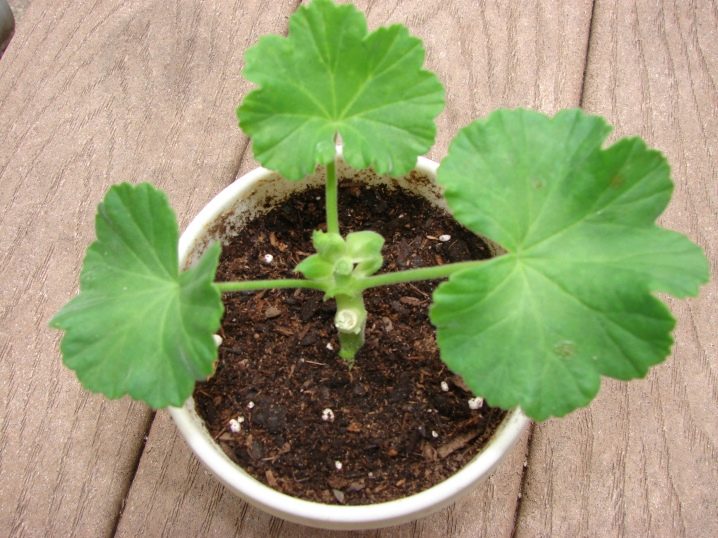
Peculiarities
In Soviet times, almost every house had a window sill decorated with geraniums. Many have retained in their memory that this plant is unremarkable, but today's varieties are simply mesmerizing with their beauty and interesting color schemes, patterns on the leaves, and lush greenery. Every year the number of fans only increases, so it is worth considering in more detail how to transplant indoor geraniums, as well as note the subtleties of caring for it.

Geranium is an unpretentious plant that does not require special care. The only danger for a flower is a transplant, because if it is done incorrectly, the plant may even die. Indoor flowers need to be transplanted for the following reasons:
- the plant grows, its root system cannot fit in a cramped pot;
- the soil loses nutrients, the plant needs new soil for normal growth and development.
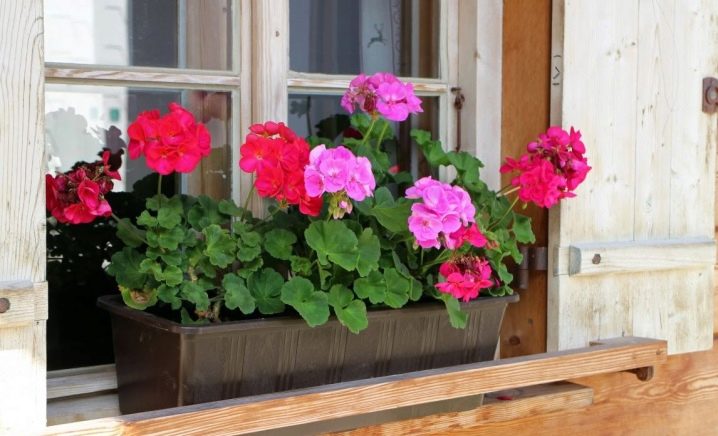
You need to transplant geraniums at home 2-3 times a year. But sometimes there are situations when a plant needs an unscheduled transplant. It is correct not to hesitate with a transplant in the following cases:
- when the pot becomes small for a plant, while the roots are usually visible in the holes of the pot, they are also visible over the substrate;
- if the geranium receives proper care, but does not grow, and also does not bloom, here the problem may lie in the wrong substrate;
- when geranium begins to wither, its leaves turn yellow, and the soil cannot completely dry out, which is usually caused by rot of the root system;
- if you need to plant a plant from open ground in a pot in the fall for further growing at home.
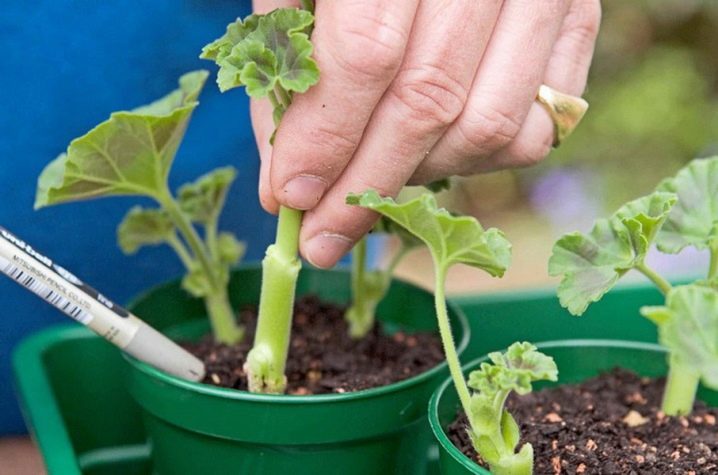
Important! You should be very careful about geraniums, since it reacts quite painfully to a transplant. It is better not to resort to this procedure without a reason.
It is strictly forbidden to touch the plants during flowering. It is worth waiting for it to bloom, since the geranium is exhausted at this time. As a result, she will most likely not be able to cope with the transplant: the buds will fall off, the leaves will turn yellow, and the flower may even die. There are times when transplanting is very necessary, then only the transshipment method can be used. All actions should be performed carefully and carefully. If the transplant is carried out during flowering, then initially the peduncles should be cut off, then all the forces will go exclusively to the development of the roots. Often, a planned transplant is done in the spring or summer. In the cold season, it is worth refraining from such manipulation, for example, in January the plant needs additional feeding in order not to lose its attractive appearance, and the transplant often becomes the impetus for its withering.
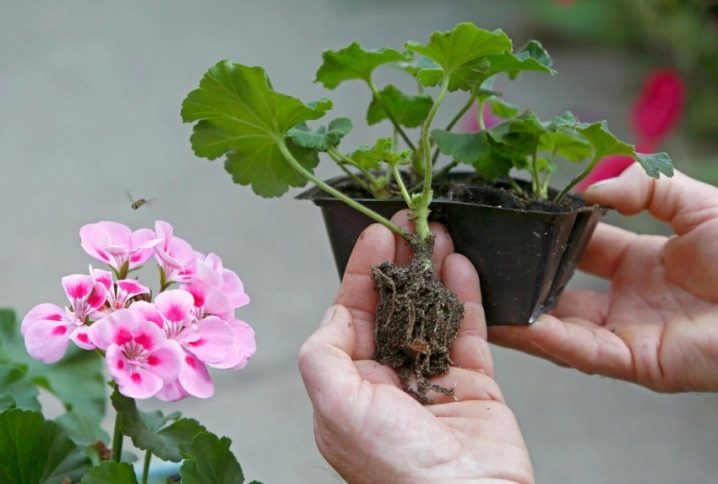
Suitable periods
If we consider the time frame that is suitable for transplanting geraniums, then it is worth noting the end of winter or the beginning of spring.Many gardeners recommend scheduling this procedure from February to April. It is during this period that the flower begins to "wake up", so this time is the best for such an operation, the plant will cope well with stress. Many gardeners transplant geraniums even in summer. At this time, the plant is less susceptible to stress, changing the place of growth is perceived less painful. In this case, it is important that the plant does not bloom. When flowering, the procedure should be postponed until the geranium has faded. Usually, in the autumn season, geranium is needed that grew in open soil, it is imperative to transplant it into a pot in order to transfer it to the house for the winter. Such a procedure is mandatory, the plant after it feels great if all actions are performed correctly and accurately.
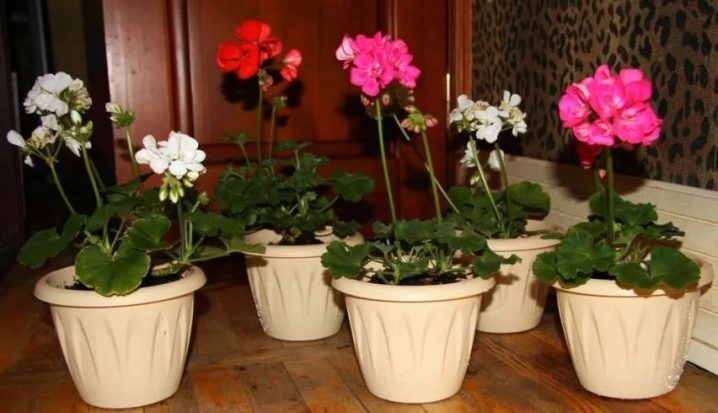
Important! Winter is a ban on transplanting geraniums. Usually the plant dies, because it does not have the strength to cope with such a sharp change.
Preparation
Before proceeding directly to the procedure itself, you should pay attention to the main points of preparation.
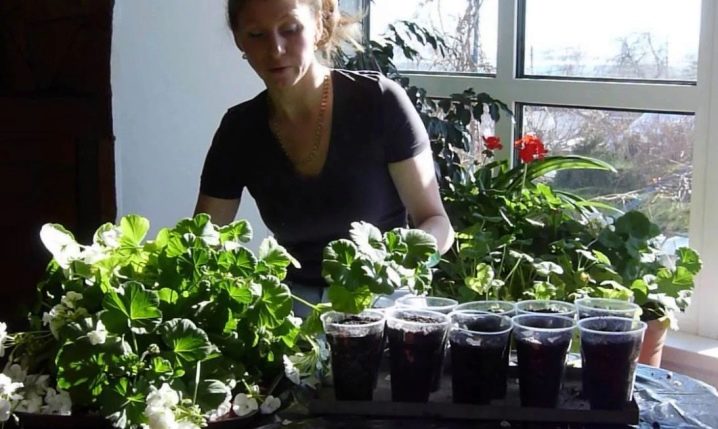
Pot
Choosing the right pot size is difficult for beginners. You should not buy a very large pot, because the plant does not need a lot of soil for normal development. If the flower is transplanted for the first time, then a container of 10-12 cm in diameter will be the best choice. The next transplant will be done in another pot, while its diameter should be 2-3 cm larger than that of the previous one. If the container is too large for a flower, then over time the soil will become waterlogged, which will lead to rotting of the root system. If we consider the various materials from which the pots are made, then ceramic models are more suitable than plastic pots. Many gardeners use clay containers, because this material perfectly removes residual moisture and salts, as a result, the plant grows and develops well.

Priming
Geranium feels great in various soil mixtures. You can use both purchased substrates for flowering plants and garden soil. If you need land for transplanting geraniums, you can do one of the following:
- sod land, river sand and humus mix in proportions 2: 1: 2;
- sand, peat and garden soil should be taken in a 1: 1: 1 ratio;
- peat, sand, leaf and sod land should be used in equal parts.
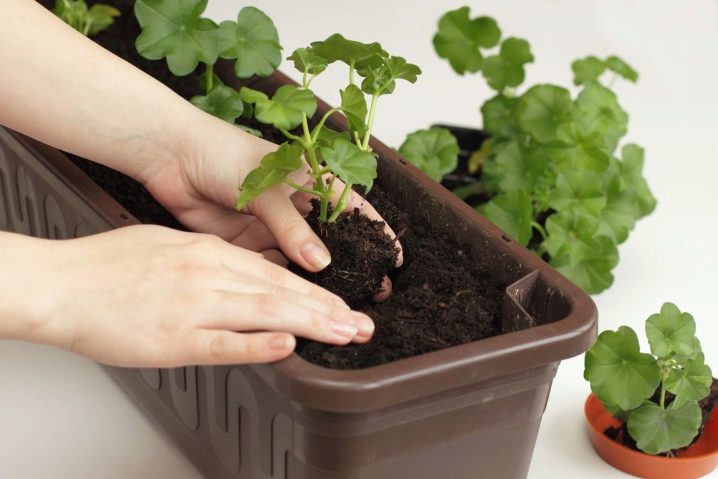
Before transplanting pelargonium, it is imperative to sterilize the ground, since this procedure will clear the ground of possible pests and diseases.
Plant preparation
There are no special means that can soften the effect of transplanting on a plant. The main thing is to find the optimal time. As mentioned above, in the winter, as well as at the time of flowering, transplanting for pelargonium is taboo. Initially, the day before the procedure, it is necessary to water the flower vigorously, since the soil should become quite moist, thus, it will be much easier to get the flower with roots. Some gardeners advise using growth stimulants that will provide geraniums with the fastest recovery after changing their "place of residence".

Step-by-step instruction
It is worth considering step by step the process of transplanting geraniums both at home and on the street.
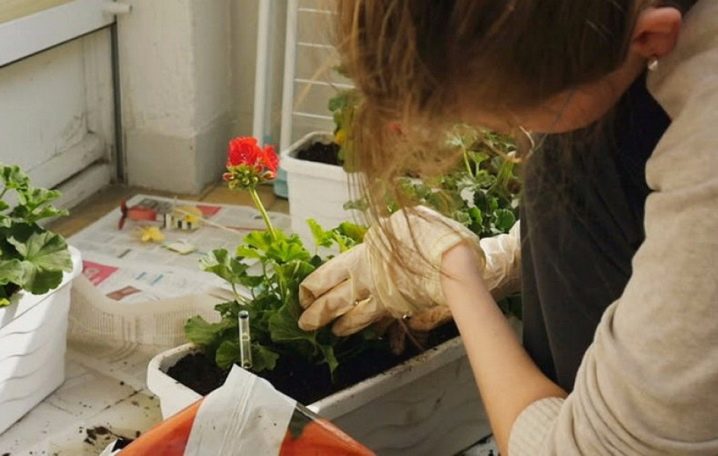
Houses
Initially, you will need to prepare the following:
- new pot;
- drainage;
- soil mixture;
- scissors;
- knife with a sharp blade;
- settled water at room temperature for irrigation.

The transplant process at home is as follows:
- it is necessary to take a new pot, put drainage on the bottom, which can be from broken brick or expanded clay;
- the drainage layer should be sprinkled with soil mixture;
- the plant must be pulled out of the old pot, while the geranium should be held as a base, turned over, and then pulled over the pot;
- it is necessary to clean the roots - some of them may dry out or have rotten areas, so they should be removed with scissors and a knife; if there are no signs of damage to the root system, then it is better not to touch the lump;
- the plant must be placed in the center of the new pot and sprinkled with earth, it is worth refraining from tamping;
- the soil will need to be thoroughly watered with water, thus, all voids will be filled with soil.
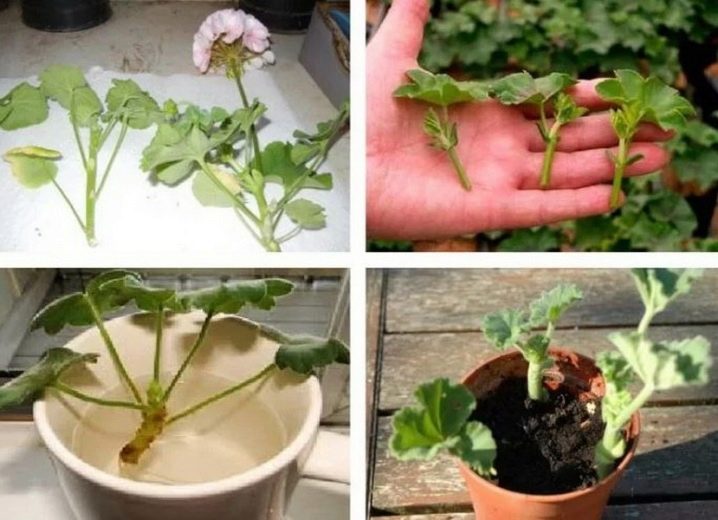
Outside
Although geranium is a houseplant, in the warm season it grows well in a flower bed or in a garden. Many flower growers plant their "favorites" in an open-air garden bed for the summer. In this case, it is worth choosing the right moment. The air temperature should already be quite high, and there should be no frosts at night. The best solution is late May or early June. So, the transplant process itself is as follows:
- it is worthwhile to initially start preparing the place: the soil must be well dug up, while the depth should be about 35 cm;
- then make a hole, the diameter of which should be slightly larger than the diameter of the earthen coma with geranium roots;
- it is worth sprinkling the bottom of the hole with special soil - it can be bought in a store or made independently, as described above;
- the plant must be removed from the pot and placed in the center of the pit, while all actions should be performed carefully;
- it is necessary to cover all the roots with earth and thoroughly water the soil around the flower.
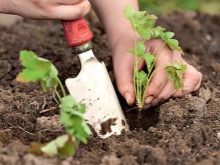
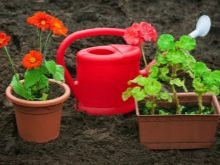
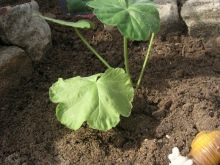
Geranium usually grows in the garden until autumn. And some species are even able to endure winter in the beds, if you provide them with the proper conditions. But in the fall, it is better to transplant the plant into a pot again and put it on the windowsill at home.
If it is necessary to transplant pelargonium from the street to the house, then it is worth carrying out this procedure before the first cold weather, performing the following steps:
- it is good to water the soil around the plant so that it is saturated with moisture;
- pour drainage into the pot and sprinkle with a small amount of soil;
- dig up geraniums along with a lump of roots;
- carefully examine the roots, while removing excess soil;
- remove dry and damaged roots, if the root system has become quite powerful, then you can trim it a little;
- place the plant in the center of the container and cover it with soil mixture in a circle, but it is imperative to leave 1 cm to the upper edge of the pot;
- water moderately so that all voids are filled with earth.
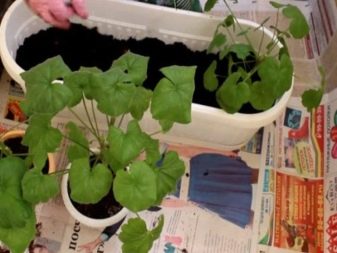
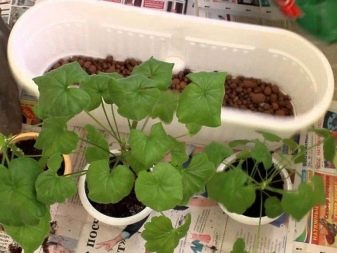
Important! Geranium propagation can be done both with the help of roots and with a shoot. In the second case, it is enough to plant the sprout in the ground and ensure proper watering. After a while, the plant will begin to form a root system.
Follow-up care
After transplantation, pelargonium needs particularly careful care, as this process causes stress on her. If the plant usually stands on the windowsill from the southern or southeastern side, and at the same time the sun's rays fall on it, then after planting this location should be abandoned. It is better to find a shaded area for at least one week, then the plant can take its usual corner. Do not forget about moderate watering, since the soil should not dry out. Although geraniums thrive in arid climates, watering should always be kept in mind. It is also worth remembering that the plant withers after overflow. There should be a balance.
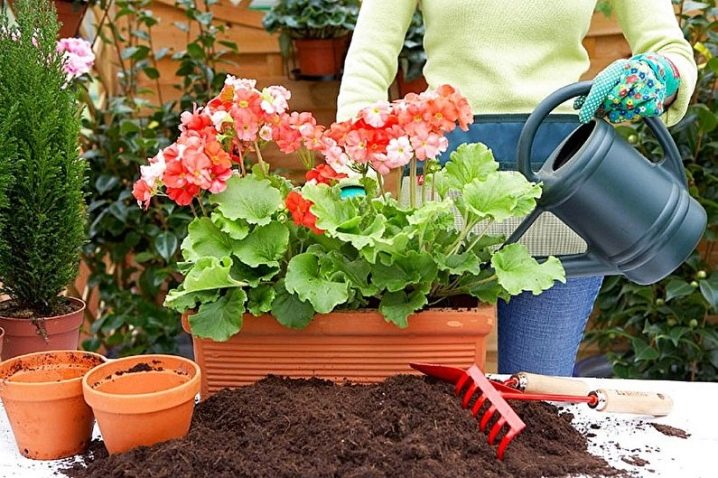
Important! Pelargonium does not like high humidity, under such conditions it begins to fade, since the roots begin to rot. It is strictly forbidden to spray it.
After transplanting, it is worth refusing to make additional fertilizing for 2-3 months. The new soil mixture already contains all the necessary elements for the growth and development of pelargonium. Further, top dressing can be applied once a month. You can use both universal remedies for flowering plants and special substances for pelargonium.During the first feeding, it is worth reducing the amount of fertilizer by about 2-3 times the amount indicated in the instructions. All further feeding can already be carried out according to the instructions from the manufacturer.

For information on how and when to transplant geraniums, see the next video.







































































































The comment was sent successfully.